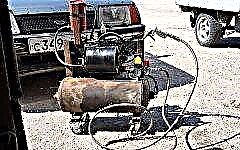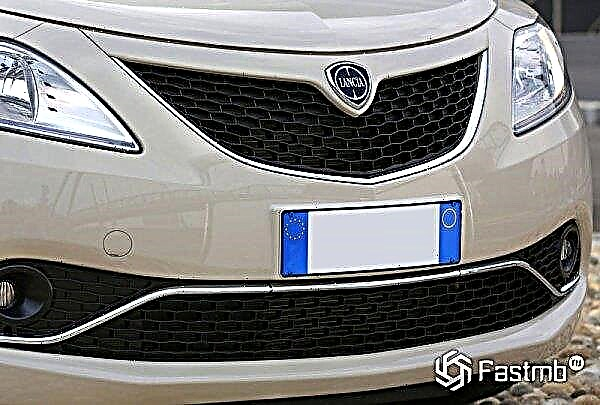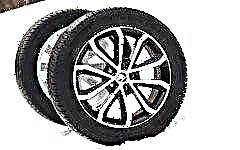

The content of the article:
- Danger of movement
- Summer tires in winter
- Possible penalties
- Winter or summer tires
Today, many car owners will say that with the onset of the first cold weather it is necessary to change the shoes of the "iron horse". There are many reasons for this, in some latitudes the weather changes instantly and you can simply find snow or ice on the road. In other cases, this is required by laws, for violation of which you will have to pay heavy fines.
It is not the first year that there has been a dilemma as to whether it is possible to ride summer tires in winter or whether it is necessary to change the car's shoes. The opinion of the drivers was divided into those who are for and those who are against. There are many reasons for this, we will try to identify the main ones, and what the consequences may be.
Is it dangerous to ride summer tires in winter?

It is possible to ride winter tires in winter, but the consequences can horrify even experienced drivers. If bad weather caught you on the road, then you can get to your destination and for this you can get a maximum warning. But it's better not to drive on summer tires all the time in winter. Rubber manufacturers adapt a certain type of rubber for specific operating conditions. Most of all, this applies to temperature conditions. Usually it is recommended to change the car's shoes when the average daily temperature is +5 Celsius or drops below.
As a rule, summer tires become stiff in winter, and the tread features do not guarantee stability on the road. The first thing a driver of a car on summer tires may encounter is the braking distance, on snow or ice, and just in frost, it will be at least twice as large as on winter tires. In this case, even with good experience, it is very difficult to calculate the braking distance, which will lead to an accident and unpredictable consequences.
Second, summer tires become hard in cold weather, which leads to rapid wear and tear and cracks on the tires. Given the tread pattern and rigidity, it will be difficult to crush on ice or snow, in such a sliding motion will simply tear the tires and until the end of winter the wear will be noticeable. According to experienced drivers, a 1: 3 wear formula, one winter driving season on summer tires, equals at least three years driving in summer.

In addition to these two main problems, in winter a car on summer tires significantly loses its technical characteristics, especially in handling. Also, some security systems stop working, since they simply cannot recognize a skid or slip, and this is an inevitable accident. The conclusion is quite simple, before you start driving in winter on summer tires, you need to think a hundred times whether you can handle the road, and whether it is worth it.
If you decide to ride summer tires in winter, then you should remember the basic rules. The speed should be minimal and optimal, so that at any moment they can react and make a maneuver. Do not forget to keep a great distance from the car in front, as the braking distance is at least doubled. Never make sudden movements with the steering wheel, everything is made doubly smooth, both the steering turns and pressing the gas pedal. While driving on summer tires in winter, it is worth keeping the average speed or slightly above average. On cars with an automatic transmission, you need to be especially careful, since the automatic automatically adjusts the speed, so it is better to switch to lower gears or even to manual mode. Regardless of the gearbox, you must enter the turns smoothly, without unnecessary jerks. In case of a skid, do not press on the brake, it is better to release it altogether and tuck the steering wheel towards the skid, and press the gas pedal in jerks. It is better to turn off auxiliary systems such as ABS and ESP, otherwise the system will lock the brakes, which will undoubtedly pull into a skid.
Summer rubber properties in winter

As already mentioned, with the onset of cold weather, summer tires of a car significantly change their properties. Each manufacturer decides in its own way which main components should be part of a particular type of rubber. Some manufacturers make a bias towards quality and strictly observe proportions, while others save money, as a result of which a low-quality product is obtained.
Automotive rubber composition
Car tires for the winter period have the main parameter - elasticity at the lowest temperatures. This allows you not to lose grip and fully control the car's handling. In addition, the manufacturer adds different fillers, vulcanizers, softeners and other components to adapt the tires to different winter conditions. For the production of summer tires, the manufacturer, on the contrary, removes these components so that in hot weather the tire does not blur on the road, and the control is confident.
Those who have ridden winter tires in the summer, especially in hot weather, can immediately say that driving such a car is quite difficult. The car can be thrown from side to side, and the wheels do not immediately respond to the steering wheel. Thus, the conclusion is that summer tires become hard in winter, which leads to a loss of control.
Tread pattern on winter and summer tires
An equally important role is played by the tread pattern on winter and summer tires. As in the variant on the composition, the main task of the tread is considered to be reliable adhesion to the road surface. For summer tires, a quick drainage of water is also important to keep the car from aquaplaning. Therefore, the tread on summer tires has wider grooves throughout the tire. Statistics show that in winter the grip of summer tires is 60% worse than winter tires.
When driving on snow on summer tires, such grooves are instantly clogged with snow, and the car will lose control, despite the presence of the most modern safety systems. Some manufacturers make summer tires wider, and in winter this leads to poor movement, especially in heavy snow.
The final choice remains with the driver, but the data show that it is better not to spare money for winter tires and change your car, rather than spend money on its restoration in the event of an accident.
What is the penalty for riding summer tires in winter?

It's no secret that there is a fine for driving on summer tires in winter. Such restrictions were introduced on January 1, 2015. The fine is stipulated in the amount of 500 rubles, but this does not apply to the first days of winter, when the weather is still variable in some parts of Russia. Before receiving a fine, the driver is warned about the need to change the car from summer tires to winter tires.
Traffic police officers refer to article 12.5 part 1 of the Administrative Code. But, since the amendments were made hastily, there are also shortcomings, especially with regard to the depth of tread wear. On winter tires, the tread depth must be at least 4 mm, but for summer tires, the tread wear is at least 1.6 mm. The main nuance is that nowhere is it strictly specified from what period to what period you need to ride on summer or winter tires, thus, the right to choose the interval falls on the owner of the car.
By the end of 2017, they promised to finalize these inconsistencies in the law. Initially, they wanted to fine drivers for driving on summer tires in winter in the amount of 5,000 rubles. Further, they lowered to 2,000 rubles, but as a result, the maximum amount of the fine for today is 500 rubles, although, according to lawyers, it will not be difficult to challenge such a protocol.
Riding summer tires or changing your car?

You can argue for a long time about changing summer tires to winter ones, and back at the end of winter.The first thing a car owner thinks about is the cost of winter tires, because you will need to buy at least 4, or even better 5 tires (the 5th for a spare tire). Similarly, you need to have 5 summer tires in stock. The second is where to store winter or summer tires. If you live in a private house and have your own garage, then this is not a problem, but if you live in an apartment and do not have your own garage, this is a whole problem for storing tires.
In large cities, there are special service centers where, for a certain monthly fee, you are given a small box for storing winter or summer tires. But if the car is budgetary, such storage becomes unprofitable. Many drivers try to minimize trips in winter, but if you really need to leave, then experienced drivers recommend buying a pair of special chains for wheels, they will help you much better through snow and ice on summer tires.
The last decision remains with the owner, if you are confident in your experience and fully comply with the necessary rules for riding summer tires in winter, then it is likely that you should not buy winter tires. In the case of long-distance trips or frequent trips out of town, it is better to get winter tires.











